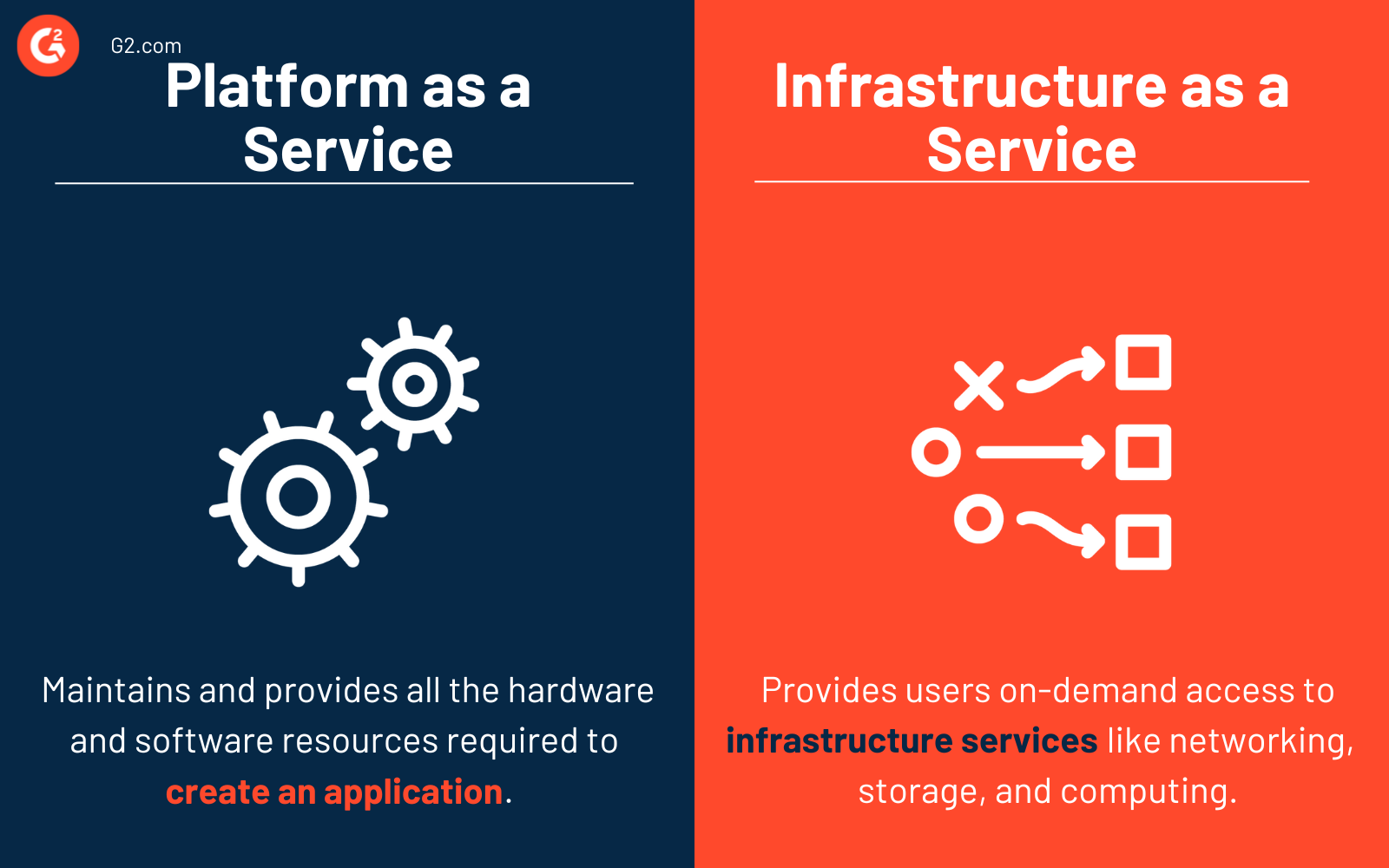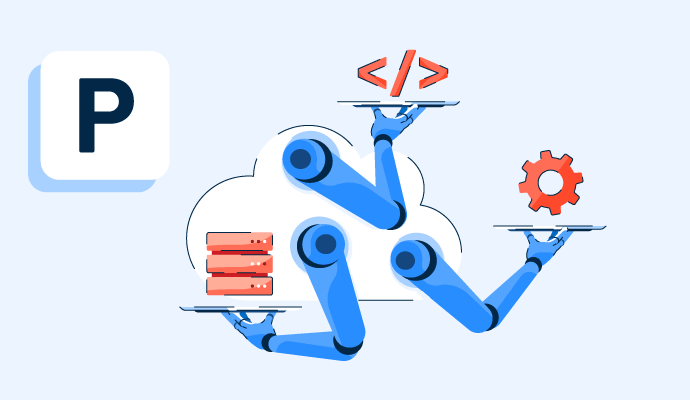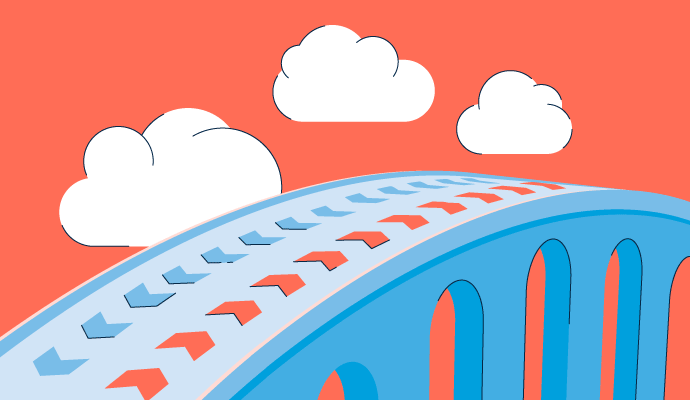What is a Platform as a Service (PaaS)?
Platform as a service (PaaS) offers a cloud platform where clients run and manage their applications without the complexity and inflexibility of on-premise platforms. The PaaS provider handles the fundamental infrastructure, scaling, and maintenance, leaving the user to concentrate solely on application development and deployment.
Developers frequently use PaaS software to create apps and integrate business applications. It gives companies a quick and affordable option to build and deploy their apps without the costs of complex on-premise infrastructure.
Types of PaaS
Each type of PaaS has unique features that organizations might need for operations. Some of the most common types of platforms as a service are as follows:
- Public PaaS is available to everyone and is managed by a third-party supplier.
- Private PaaS is installed on-site or in a virtual private cloud environment and controlled by an organization's IT staff.
- Hybrid PaaS is a mix of public and private PaaS that allows businesses to create and launch apps across both settings.
- Communication PaaS is a cloud-based platform that lets users add real-time communication capabilities into the application without requiring back-end infrastructure and application programming interfaces (APIs).
- Mobile PaaS is a platform that caters to creating and delivering mobile applications.
- Open-source PaaS allows users to customize their platforms. Open-source is constructed using open-source technology.
Platform as a Service benefits
Companies turn to PaaS so they can concentrate on their core skills while delivering applications quickly and effectively. PaaS provides a scalable, adaptable platform that enables organizations to innovate rapidly and respond seamlessly to changing customer demands. PaaS also;
- Reduces coding time. With pre-coded application components such as workflow, directory services, security features, and search, PaaS development tools reduce the time to create new apps.
- Increases development capacity. PaaS provides development teams with new capabilities without hiring additional staff members with specific skills.
- Simplifies developing for different platforms. Some PaaS vendors offer development options for various platforms, including PCs, mobile devices, and browsers.
- Assists geographically distributed teams. Development teams can collaborate on projects even when members are spread out across different places. They can access the development environment over the Internet.
- Manages the application lifecycle. PaaS offers relevant tools to support the entire app’s lifetime.
PaaS use cases
PaaS facilitate or advance several IT projects by offering an integrated and ready-to-use platform. It allows businesses to delegate infrastructure administration to the cloud provider and concentrate on developing, deploying, and managing applications. Below are some notable ways companies are using PaaS.
- API development and management: PaaS makes it easy to create, operate, maintain, and secure APIs for exchanging data and functionality between apps.
- Internet of Things (IoT): PaaS supports many programming languages, tools, and application environments required for IoT application development. It processes real-time data produced by IoT devices.
- Agile development and DevOps: PaaS offers fully configured environments for automating the lifecycle of a software application, including integration, delivery, security, testing, and deployment.
- Cloud migration and cloud-native development: Users can easily move existing applications to the cloud with PaaS, especially when doing so via re-platforming or refactoring.
- Hybrid cloud strategy: Hybrid cloud combines on-premises infrastructure, along with private public cloud services to offer orchestration, management, and application mobility across all three. Organizations can execute and expand their conventional or cloud-native workloads using the most suitable computing model in a unified and flexible distributed computing environment. Building, deploying, and managing a hybrid cloud environment are easy using PaaS.
Components of PaaS
Discussed below, PaaS components say a lot about how these cloud computing models work.
- Cloud infrastructure: PaaS relies on a network of servers and storage devices in data centers worldwide. These servers are interconnected via the Internet, so PaaS can be accessed from anywhere.
- Subscription model: Most PaaS providers operate on a subscription-based model. Customers pay for the services they use, usually monthly or yearly. Some providers may also offer pay-as-you-go models, whereby customers only pay for the resources they need.
- Platform provisioning: When users subscribe to PaaS, they rent a platform to manage applications. It includes an operating system, a programming language execution environment, a database, and a web server.
- Scalability: PaaS vendors offer scalable solutions so if an application's demand increases, the platform allocates additional resources to handle the load. Similarly, it decreases resources during lower demand. Flexibility is one of the main benefits of using PaaS.
- Development tools: PaaS offers development tools to build, test, and deploy their applications. These include text editors, version control systems, and testing environments.
- Middleware services: PaaS includes middleware services like application servers, content management, and database management systems. These allow developers to focus on the business logic of their applications rather than the underlying infrastructure.
- Security and maintenance: PaaS is responsible for the security and maintenance of the underlying infrastructure, like applying patches, performing upgrades, and looking out for security threats.
- Integration and APIs: PaaS providers offer APIs that allow developers to integrate their applications with other services, both within and outside the service.
- Multi-tenancy. PaaS is typically multi-tenant, meaning multiple users can use the same underlying resources concurrently. Each tenant's data and applications remain isolated from others, ensuring privacy and security.
PaaS vs. IaaS
It's common to confuse PaaS with IaaS, but the two are different.

Platform as a service maintains and provides all the hardware and software resources required to create an application. The software development platform is not the user's responsibility to manage. Users are responsible for writing the code and handling all the apps and data. PaaS controls additional resources to lift the operational burden from IT operations teams and developers.
Infrastructure as a service (IaaS) provides users on-demand access to infrastructure services like virtualization, networking, storage, and computing. Consumers are responsible for managing virtual machines, operating systems, middleware, apps, and their own data. However, they don’t have to maintain or update the architecture of their data center.
Learn more about IaaS and discover a smarter way to manage IT infrastructure.

Sagar Joshi
Sagar Joshi is a former content marketing specialist at G2 in India. He is an engineer with a keen interest in data analytics and cybersecurity. He writes about topics related to them. You can find him reading books, learning a new language, or playing pool in his free time.




















